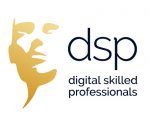Dynamic Approach Teaching People New Skills
HARVARD BUSINESS REVIEW DIGITAL ARTICLE
Free download below
As employees and organizations adapt to hybrid work norms, emerging technologies, and general business disruptions, the skills needed to succeed in today’s work environment are shifting rapidly.
To better understand how organizations are managing their shifting skills needs, 6,500 employees, as well as 75 HR leaders where surveyed. Analysis revealed that most organizations used one of two approaches to ensure employees have the skills the business needs when it needs them:
- Reactive – Unfortunately, many organizations find themselves taking a reactive approach, scrambling to build new skills as needs arise. One HR leader from a large manufacturing organization shared the challenge of trying to keep up with requests from the business to develop new skills: “When we put together a learning solution, the business has already moved on.” In organizations with a reactive approach, employees apply only 54% of the new skills they learn after 12 months. ‘These organizations are simply too slow to get the skills to employees at the times they’re needed most.
- Predictive – On the other side, more than 50% of HR leaders think the solution is to get ahead by predicting the business’ future skills needs. Without a crystal ball, attempts at predicting future skills are more likely to lead to misplaced investments in wasted training or outdated skills. Our research finds that trying to predict skills is worse than reacting: Employees apply only 37% of the new skills they learn
Skills accelerators leverage existing resources and expertise.
Rather than making big investments in predictive approaches that may not work or resorting to a reactive approach, our research reveals a third option: the dynamic approach. This strategy casts skills management as a dynamic exercise that embraces ambiguity, makes peace with imperfection, and frees up HR, managers, and employees to move fast in responding to the things they know and can anticipate. In our current work environment, where employees are constantly seeking increased transparency, personalization, and choice, the dynamic approach empowers them with more information so that they can make the right choices to build the skills they need to stay current in their desired roles.
Employees at organizations that use a dynamic skills approach apply 75% of the new skills they learn – double the new skills application realized with the predictive approach.
Here are three steps organizations can take to adopt a dynamic approach to killing and reskilling employees.
Does your organization have a skills strategy with a dynamic skills approach?
Our Skills-as-a-Service will elevate your transformation



